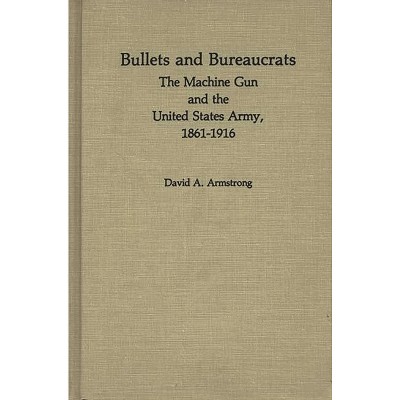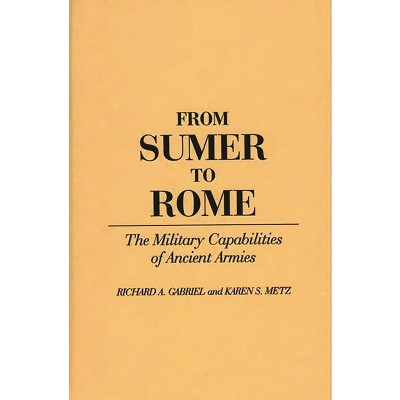Sponsored

The Later Thirty Years War - (Contributions in Military Studies) by William Guthrie (Hardcover)
In Stock
Sponsored
About this item
Highlights
- Continuing where the author left off in Battles of the Thirty Years War, this companion volume details the military aspects of the final years of this important early modern conflict.
- About the Author: William P. Guthrie is an independent researcher.
- 320 Pages
- History, Military
- Series Name: Contributions in Military Studies
Description
About the Book
Continuing where the author left off in Battles of the Thirty Years War, this companion volume details the military aspects of the final years of this important early modern conflict. Whereas the earlier half of the war was dominated by a few climactic battles (White Mountain, Lutter, Breitenfeld, and Nordlingen), the later period consisted of a more drawn-out struggle between more evenly matched opponents. The successful general had to conduct strategic campaigns, in which battles, sieges, maneuvers, and logistics would all play a part. Guthrie examines broad questions of strategy, leadership, armaments, organization, logistics, and war finances.
Battles detailed in this volume include the Swedish victories of Wittstock, 2nd Breitenfeld, and Jankow; the French victories of Rheinfelden, Rocroi, Freiburg, and 2nd Nordlingen; as well as the anticlimactic action of Zusmarhausen. Guthrie emphasizes the unique aspects of the Thirty Years War, its place in the evolution of warfare and weapons, and the adjustment of the actual waging of war to the rise of the nascent linear system. Based on research previously unavailable in English, each campaign is recreated in detail, including orders of battle, tactics, and maps.
Book Synopsis
Continuing where the author left off in Battles of the Thirty Years War, this companion volume details the military aspects of the final years of this important early modern conflict. Whereas the earlier half of the war was dominated by a few climactic battles (White Mountain, Lutter, Breitenfeld, and Nordlingen), the later period consisted of a more drawn-out struggle between more evenly matched opponents. The successful general had to conduct strategic campaigns, in which battles, sieges, maneuvers, and logistics would all play a part. Guthrie examines broad questions of strategy, leadership, armaments, organization, logistics, and war finances.
Battles detailed in this volume include the Swedish victories of Wittstock, 2nd Breitenfeld, and Jankow; the French victories of Rheinfelden, Rocroi, Freiburg, and 2nd Nordlingen; as well as the anticlimactic action of Zusmarhausen. Guthrie emphasizes the unique aspects of the Thirty Years War, its place in the evolution of warfare and weapons, and the adjustment of the actual waging of war to the rise of the nascent linear system. Based on research previously unavailable in English, each campaign is recreated in detail, including orders of battle, tactics, and maps.Review Quotes
"[G]uthrie has done a great service to students of the art of warfare in early modern Europe. . . . Where Guthrie really shines is in his analysis of leading personalities and his battle narratives. These sections are solidly researched, exhaustive, and to a large extent previously unavailable in a single treatment, certainly so in English. . . . [G]uthrie has made a major contribution to the English-language literature on the Thirty Years' War....^IThe Later Thirty Years War^R is a profoundly useful book." --H-NET
"Guthrie has done an amazing job of organizing and clearly presenting a huge variety of information covering the makeup, leadership, and actions of armies from throughout Europe. Scholars particularly will find valuable the tables contained in each chapter that list participating armies by regiment and the index of military units at the end of work, that allows the actions of the individual units to be traced throughout the war. The book's strength lies in its value as a reference work. It gives a clear and well-organized description of a wide variety of details regarding the military history of the Thirty Year's War. . . . [A]n incredibly valuable work because of the enormous variety of information carefully and clearly described in the book. Scholars and students who want details regarding the armies and battles of the Thirty Year's War will find the book quite useful." --Journal of Modern History "[A]n immensely handy reference to military operations during final years of the long war. . . . Well worth reading-and having-for anyone with a serious interest in the conduct of war during the early seventeenth century." --NYMAS Review "[I]mmensely useful for the extraordinary amount of material that it contains." --NYMAS Newsletter "What, seen from a distance, appears as mere pillaging, Guthrie shows to have frequently been an increasingly sophisticated waging of stomach war. Military, the second half of the Thirty Years War may have been unspectacular, but it was hardly inconsequential." --German Studies Review "By offering the most detailed coverage in English of the neglected later stage of the war, the book should shift Anglophone discussion away from the great Gustavus Adolphus towards a more balanced treatment of the entire conflict." --Journal of Military History "The military aspects of the book are very useful not only for those interested in the history of the Thirty Years' War, but also for those curious about the history of the art of war." --The Sixteenth Century JournalAbout the Author
William P. Guthrie is an independent researcher. Since receiving his PhD in 1992, he has written extensively on military history and the 17th century. This is his second book.Shipping details
Return details
Frequently bought together

Trending Non-Fiction
















